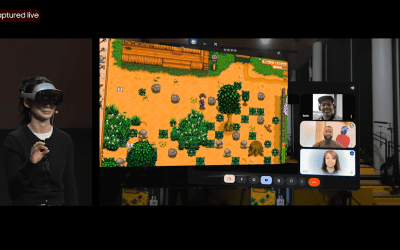
basics

PoE basics and beyond: What every engineer should know
Power over Ethernet (PoE) is not rocket science, but it’s not plug-and-play magic either. This short primer walks through the basics with a few practical nudges for those curious to try it out. It’s a technology that delivers electrical power alongside data over standard twisted-pair Ethernet cables. It enables a single RJ45 cable to supply…

Microcontroller Basics – Applications, Working, Types, FAQs
– Advertisement – A microcontroller is a small, low-cost computer-on-a-chip that is designed to perform a specific set of tasks. It is used in a variety of applications, including controlling machines, sensing and monitoring devices, and automated systems. A microcontroller typically consists of a central processing unit (CPU), memory, input/output (I/O) ports, and support for…

3D Layered Text: The Basics | CSS-Tricks
Recently, a client asked me to create a bulging text effect. These are exactly the kinds of creative challenges I live for. I explored several directions, JavaScript solutions, SVG filters, but then I remembered the concept of 3D layered text. With a bit of cleverness and some advanced CSS, I managed to get a result…

RISC-V basics: The truth about custom extensions
The era of universal processor architectures is giving way to workload-specific designs optimized for performance, power, and scalability. As data-centric applications in artificial intelligence (AI), edge computing, automotive, and industrial markets continue to expand, they are driving a fundamental shift in processor design. Arguably, chipmakers can no longer rely on generalized architectures to meet the…

Chiplet design basics for engineers
The world is experiencing an insatiable and rapidly growing demand for artificial intelligence (AI) and high-performance computing (HPC) applications. Breakthroughs in machine learning, data analytics, and the need for faster processing across all industries fuel this surge. Application-specific integrated circuits (ASICs), typically implemented as system-on-chip (SoC) devices, are central to today’s AI and HPC solutions….

Chiplet basics: Separating hype from reality
There’s currently a significant buzz within the semiconductor industry around chiplets, bare silicon dies intended to be combined with others into a single packaged device. Companies are beginning to plan for chiplet-based designs, also known as multi-die systems. Yet, there is still uncertainty about what designing chiplet architecture entails, which technologies are ready for use,…

The Basics of Node.js Streams — SitePoint
Node.js is asynchronous and event driven in nature. As a result, it’s very good at handling I/O bound tasks. If you are working on an app that performs I/O operations, you can take advantage of the streams available in Node.js. So, let’s explore Streams in detail and understand how they can simplify I/O. Key Takeaways…

DRAM basics and its quest for thermal stability by optimizing peripheral transistors
For decades, compute architectures have relied on dynamic random-access memory (DRAM) as their main memory, providing temporary storage from which processing units retrieve data and program code. The high-speed operation, large integration density, cost-effectiveness, and excellent reliability have contributed to the widespread adoption of DRAM technology in many electronic devices. DRAM bit cell—the element that…



